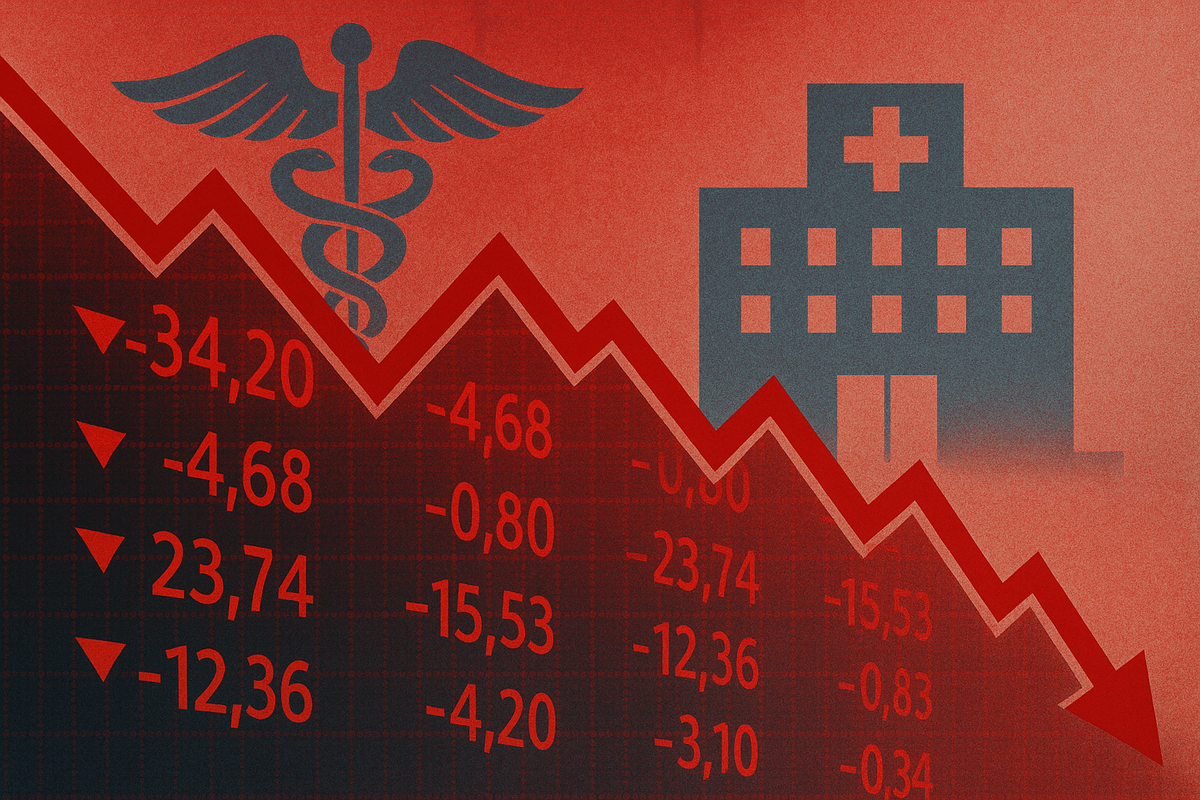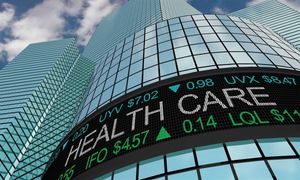
Cardinal Health (NYSE: CAH) experienced a notable downturn in its stock performance, with shares dropping over 7% following its latest earnings report, despite the healthcare giant announcing stronger-than-expected profits. This counterintuitive market reaction underscores a critical investor focus on top-line growth, especially for companies that have enjoyed significant year-to-date stock appreciation. The dip highlights the market's sensitivity to mixed financial signals and its elevated expectations for established players in the healthcare distribution sector.
The immediate implication for Cardinal Health is a loss of investor confidence, at least in the short term, which could impact its valuation and potentially influence future strategic decisions. For the broader market, this event serves as a reminder that even robust profitability might not be enough to satisfy investors if revenue growth falters, particularly in a mature industry where consistent expansion is key to long-term value creation.
Revenue Miss Overshadows Profit Beat: A Closer Look
On May 1, 2025, Cardinal Health released its Third Quarter Fiscal Year 2025 earnings report, revealing a complex financial picture that ultimately led to its stock decline. The company reported total revenues of $54.9 billion, which remained flat compared to the same period in the prior fiscal year. This figure slightly missed the Zacks Consensus Estimate of $55.33 billion by 0.2%. While the company noted that revenue increased by 19% when excluding the impact of a previously communicated customer contract expiration, the headline revenue miss proved to be a significant point of contention for investors.
In stark contrast to the revenue performance, Cardinal Health delivered a strong profit beat. The company reported non-GAAP diluted earnings per share (EPS) of $2.35, comfortably surpassing analyst expectations of $2.15 per share. GAAP operating earnings increased to $730 million, and non-GAAP operating earnings saw a 21% increase to $807 million, driven by segment profit growth across all operating segments. The Pharmaceutical and Specialty Solutions segment profit increased 14% to $662 million, while the Global Medical Products and Distribution segment profit surged by 77% to $39 million, primarily due to cost optimization initiatives.
The timeline leading up to this moment saw Cardinal Health's shares performing exceptionally well. Prior to the Q3 FY2025 earnings report, CAH shares had gained an impressive 19.5% year-to-date. Over the 52 weeks leading up to April 22, 2025, the stock had climbed 29.5%, significantly outperforming the S&P 500 Index's 5.2% gain and the Health Care Select Sector SPDR Fund's 3.5% drop over the same period. This strong pre-earnings rally likely set high expectations among investors, making any perceived weakness, such as a revenue miss, more impactful. The initial market reaction saw shares up 0.5% in pre-market trading, suggesting an initial positive response to the profit beat, but this quickly reversed as the market digested the revenue figures and the implications for future growth.
Shifting Fortunes: Winners and Losers in the Wake of the Dip
The immediate loser in this scenario is undoubtedly Cardinal Health (NYSE: CAH) itself, along with its shareholders who witnessed a significant erosion of value in a single trading session. The stock dip reflects a short-term loss of investor confidence, which could potentially affect the company's valuation and its ability to attract capital or execute strategic initiatives in the future. While the profit beat demonstrates operational efficiency, the market's focus on the top-line miss suggests concerns about the sustainability of growth.
For Cardinal Health's primary competitors, McKesson (NYSE: MCK) and AmerisourceBergen (NYSE: ABC), the implications are more nuanced. The U.S. healthcare distribution market is highly concentrated, with these three companies dominating a vast majority of the market share. If Cardinal Health's revenue shortfall is indicative of company-specific operational challenges, such as the loss of a major customer contract or internal inefficiencies, then McKesson and AmerisourceBergen could potentially gain market share. Customers (pharmacies, hospitals, and other healthcare providers) might shift their business to competitors perceived as more stable or offering better growth prospects, directly benefiting McKesson and AmerisBergen through increased sales volume.
However, if Cardinal Health's revenue miss is a symptom of broader industry headwinds—such as persistent pricing pressures, increased regulatory scrutiny, or rising operational costs affecting the entire healthcare distribution sector—then McKesson and AmerisourceBergen might also face similar challenges. In this scenario, a dip in one major player's stock could signal systemic issues, leading to a negative sentiment across the entire sector and potentially affecting the stock prices of its competitors as well. Suppliers, primarily pharmaceutical and medical device manufacturers, rely heavily on these major distributors. A financial weakening of Cardinal Health could pose a payment risk or create distribution challenges for its suppliers, although the overall market concentration means the "Big Three" still wield significant purchasing power.
Industry Impact and Broader Implications
Cardinal Health's mixed earnings report and subsequent stock dip resonate across the broader healthcare distribution industry, highlighting key trends and potential ripple effects. The market's strong reaction to a revenue miss, even in the face of a profit beat, underscores the increasing investor scrutiny on top-line growth in a mature and highly competitive sector. This suggests that investors are not just looking at current profitability but also at the sustainability of revenue streams as an indicator of future financial health.
The healthcare distribution industry operates on notoriously thin profit margins, typically around 0.3% for distributors. This makes consistent revenue growth crucial for maintaining and expanding profitability. Cardinal Health's experience could prompt a re-evaluation of growth strategies across the sector. Competitors like McKesson and AmerisourceBergen will be closely watched for their upcoming earnings reports to see if similar revenue pressures are evident, which would suggest industry-wide challenges rather than company-specific issues. If the revenue struggles are widespread, it could lead to increased scrutiny from investors, potentially affecting borrowing costs or investment in the sector as a whole.
While the earnings report itself did not introduce new regulatory or policy implications, the healthcare distribution industry has historically faced significant legal and regulatory challenges, notably the opioid settlements that have impacted all major distributors. This event, however, appears to be more of a market reaction to financial performance within existing frameworks rather than a trigger for new regulatory concerns. Historically, companies in mature industries often face investor skepticism if revenue growth falters, even with strong profits, as it can signal future challenges in maintaining market share and profitability. This situation with Cardinal Health serves as a contemporary example of this enduring market dynamic.
What Comes Next for Cardinal Health and the Market
In the short term, Cardinal Health will likely face continued investor scrutiny regarding its revenue growth trajectory. The company may need to provide clearer guidance or outline specific strategic initiatives to reassure the market that it can reignite top-line expansion. This could involve emphasizing new customer wins, highlighting growth in specific product categories like specialty pharmaceuticals, or detailing further cost optimization efforts that can translate into sustainable revenue. Investors will be keenly watching for any updates on major customer contracts or new business development.
Looking further ahead, Cardinal Health's long-term strategy will likely focus on optimizing its revenue streams and potentially exploring new avenues for growth. This could include strategic acquisitions in complementary areas, expanding its presence in higher-growth segments of the healthcare market, or leveraging technology to enhance its distribution efficiency and service offerings. The challenge for Cardinal Health will be to demonstrate that its profit growth is not merely a result of cost-cutting but is supported by a robust and expanding revenue base.
Potential scenarios for Cardinal Health include a successful rebound if the company can effectively address investor concerns about revenue, perhaps through new business wins or strategic pivots that unlock new growth opportunities. Conversely, if revenue challenges persist, it could lead to continued pressure on the stock and potentially impact its competitive standing within the highly concentrated healthcare distribution market. Market opportunities may emerge in areas like specialty drug distribution or value-added services that leverage Cardinal Health's extensive network. The company's ability to adapt and innovate in a dynamic healthcare landscape will be crucial for its future performance.
Conclusion: A Wake-Up Call for Growth
Cardinal Health's unexpected stock dip, despite a strong profit beat, serves as a potent reminder of the market's evolving priorities. The key takeaway from this event is that while profitability remains paramount, investors are increasingly demanding consistent and sustainable revenue growth, especially from companies that have already seen significant appreciation in their stock value. The mixed financial results underscore the delicate balance companies must strike between managing costs and expanding their top line.
Moving forward, the market will likely assess healthcare distributors with a sharper focus on their revenue generation capabilities. This event highlights that even in mature industries with established players, the narrative of growth is critical for investor confidence. For Cardinal Health, the immediate challenge is to articulate a clear path to renewed revenue expansion that can complement its demonstrated profitability.
Investors should closely watch Cardinal Health's future revenue guidance, any announcements regarding new contracts or strategic partnerships, and the company's overall approach to addressing growth concerns. Furthermore, it will be insightful to observe the upcoming earnings reports of its peers, McKesson and AmerisourceBergen, to determine if the revenue pressures experienced by Cardinal Health are isolated or indicative of broader industry trends. The lasting impact of this event will be a heightened awareness among investors that even strong financial performance can be overshadowed if the growth story lacks conviction.






